Gear Of The Year: Best hardware instruments of 2019
One of our biggest categories, the best hardware instrument rounds off our regularly voted awards this year. But what has come out victorious?
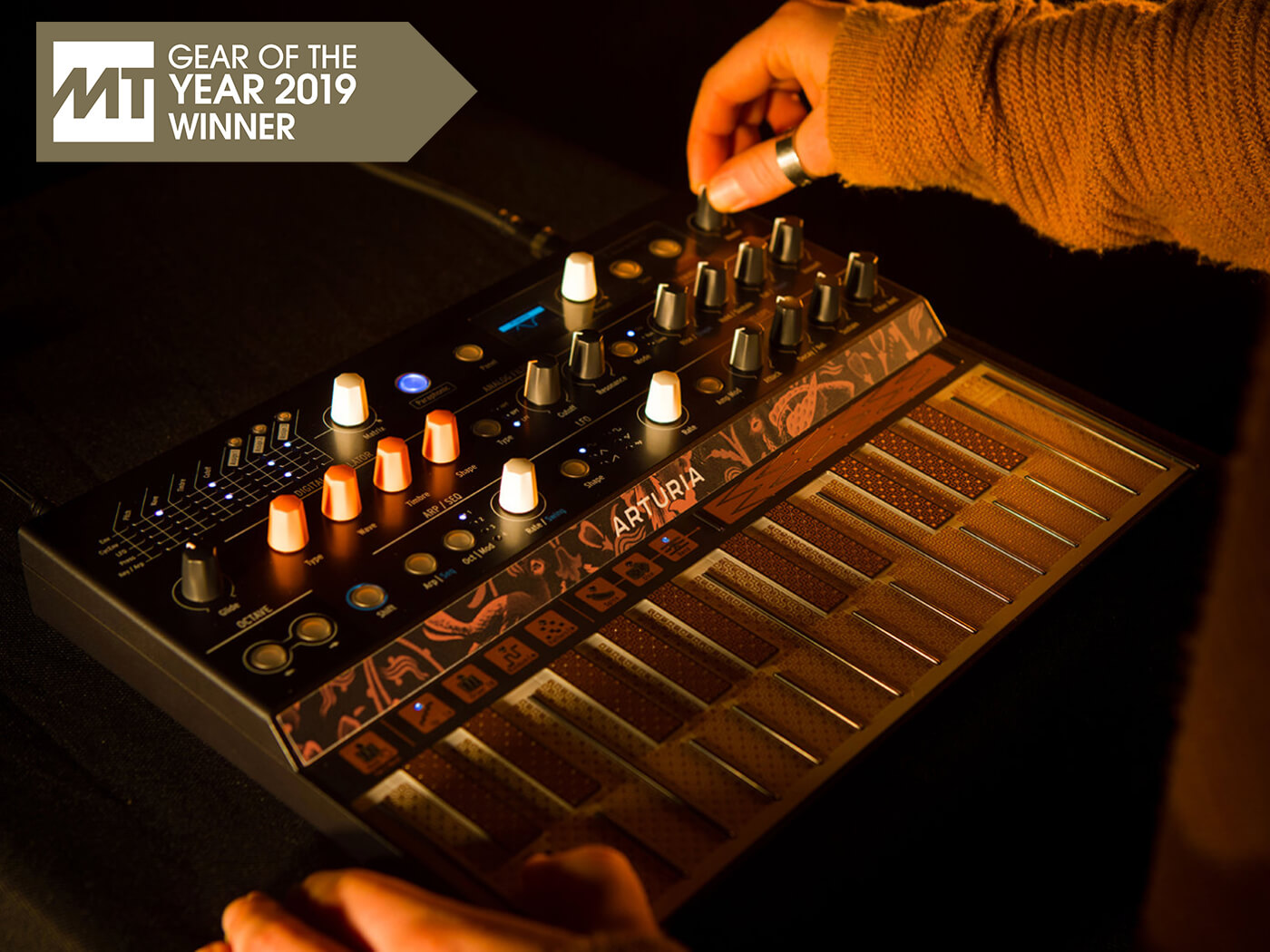
WINNER: Arturia MicroFreak
Arturia’s MicroFreak is cool, digital, sounds amazing and was developed along with Mutable Instruments, one of the most highly regarded Eurorack companies. It features no less than 11 Oscillator modes which gives it a sound – actually a lot of sound – of its own. These include subtractive-styled waves, a Wavetable mode (with 16 different wavetables), and a Harmonics mode. It came a something of a surprise to us, it’s got a brave look and is capable of very interesting timbral creativity. It represents very good value for money.
“This is a great little synth for use in a number of settings,” said reviewer Dave Gale. “especially if you’re considering live, working with and triggering sequences, or placing it into a setup with a DAW. It represents very good value for money, providing basic synthesis possibilities alongside more complicated and highly inspiring digitised formats. Add this to the included analogue filter and comprehensive routing and modulation capabilities and you have a powerful synth in a highly compact form that is very appealing.”
As well as highlighting the MicroFreak’s compact, dinky and lightweight design, Dave also spoke about the analogue spirit of the synth: that “Arturia has helpfully included a beautiful but gritty 12dB/2-pole state-variable filter, which is analogue based. Offering simple control of cutoff and resonance, it is able to offer low-pass, band-pass and high-pass operation. This is an exceptional brave new design from Arturia which has the potential for lots of sonic brilliance.
Highly commended: Korg Minilogue XD
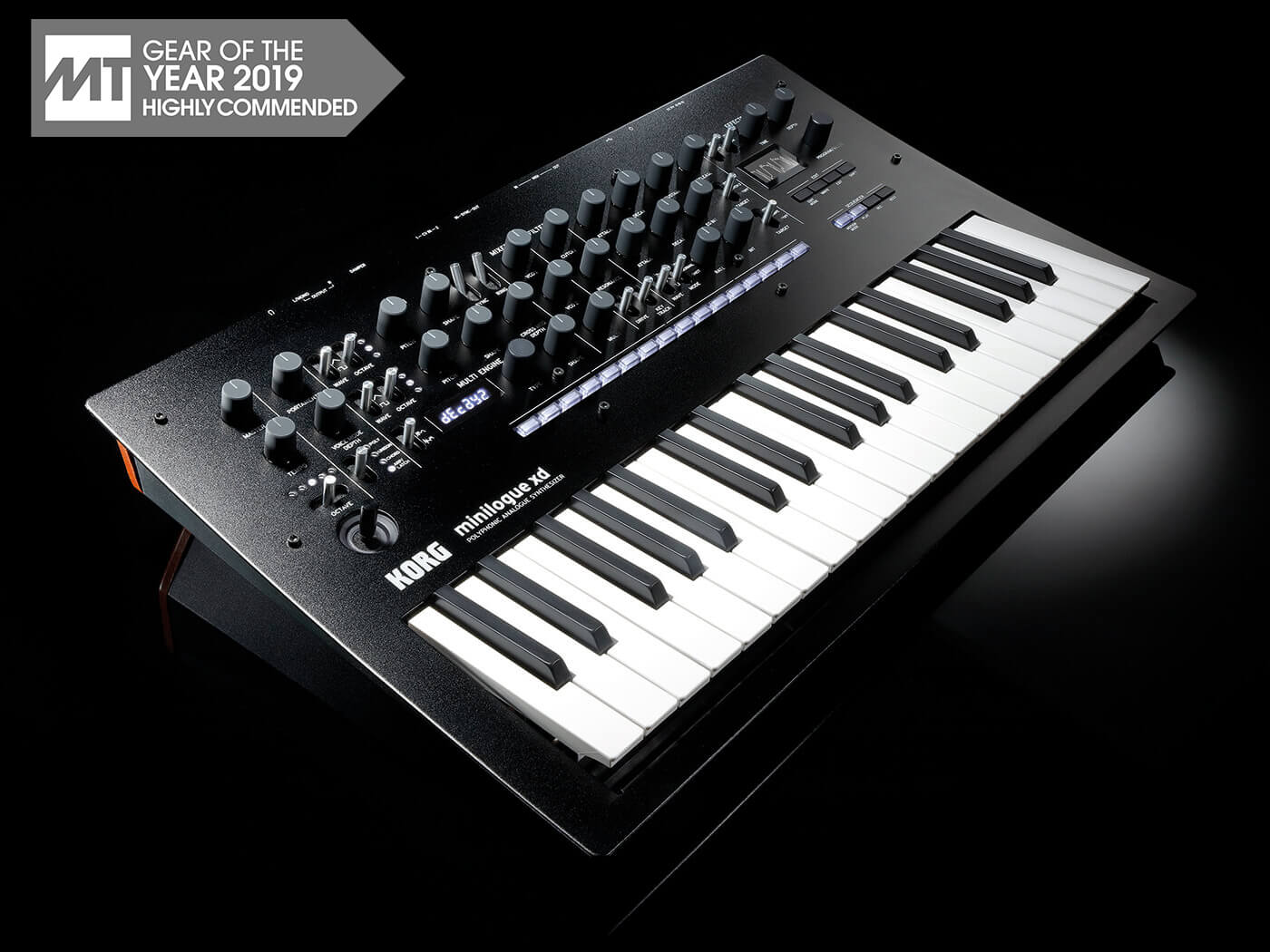
Korg’s XD represents an exercise in space-filling, landing as it does between the price points for the bigger Minilogue and Pro, however that isn’t to say that the XD isn’t a great synth in its own right. It boasts a lush and immense sound and a flexible multi-engine. The depth of Korg’s XD is genuinely quite staggering for the price.
In our review we said “It’s all-too-easy (as I’ve shown here) to get carried away with comparing and contrasting XD with its siblings, rather than appreciating it alone. Of course, it has some excellent features that are shared with these, but do try and enjoy it on its own, as it stands out in a competitive area as a synth which is both big in sound and flexible. You might prefer the pure analogue sound of the original, in which case it can now be picked up for around £430. But paying the extra for XD increases your sonic options and adds other bits, so is well worth it.”
Also nominated
Waldorf Quantum
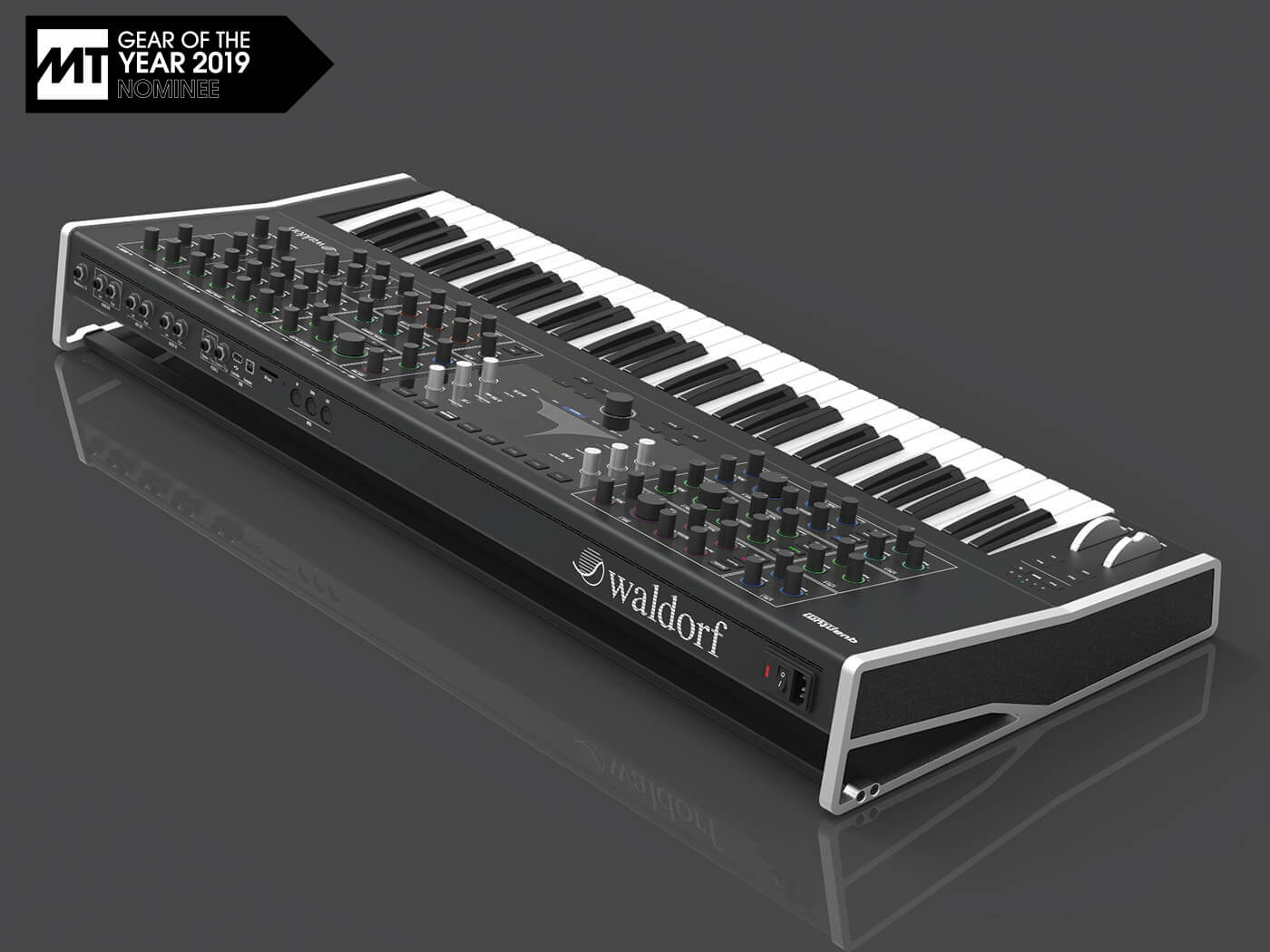
This trailblazing synth is leading the polysynth renaissance with its inspiring technology and huge sound. Boasting eight voices, a five-octave keyboard, wavetable, granular, subtractive and resonator synth engines, plus enormous modulation capabilities and two analogue low-pass filters, Quantum is a real beast.
In practice, we loved the excellent, touchscreen user interface, the striking design and build quality and the fact that you can get lost forever in sound creation with its wealth of presets and nuanced sound engines.
Modal Electronics Skulpt
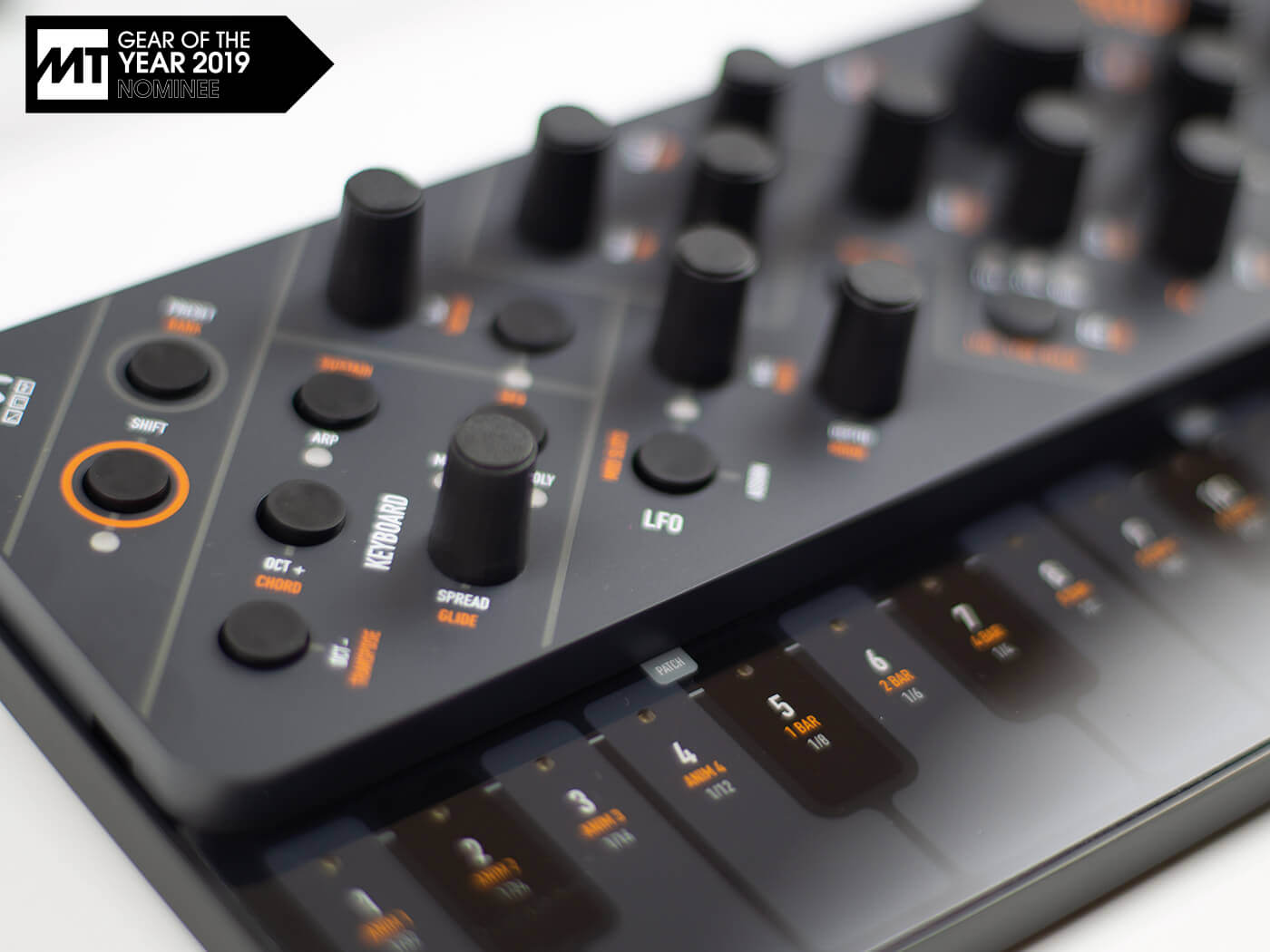
A little virtual analogue synth designed for your desktop, Skulpt offers four voices of polyphony, with a huge eight oscillators per voice making thick unison patches a dream. What’s great about Skulpt is how immediate it is out of the box and how much extra functionality you can get out of it when used with the included Editor software.
The two-pole resonant filter can morph from low-pass, through band-pass to high-pass and has built-in distortion and delay effects, too. Factor in the four LFOs, two of which operate up into audio rate, and a powerful 256-note sequencer and you can see this pack a decent punch for the price.
The market for cheap synths is truly at boiling point and, while there are even more affordable models, our reviewer described this as “one of the best-sounding and most inspiring.”
Studio Electronics Boomstar MKII
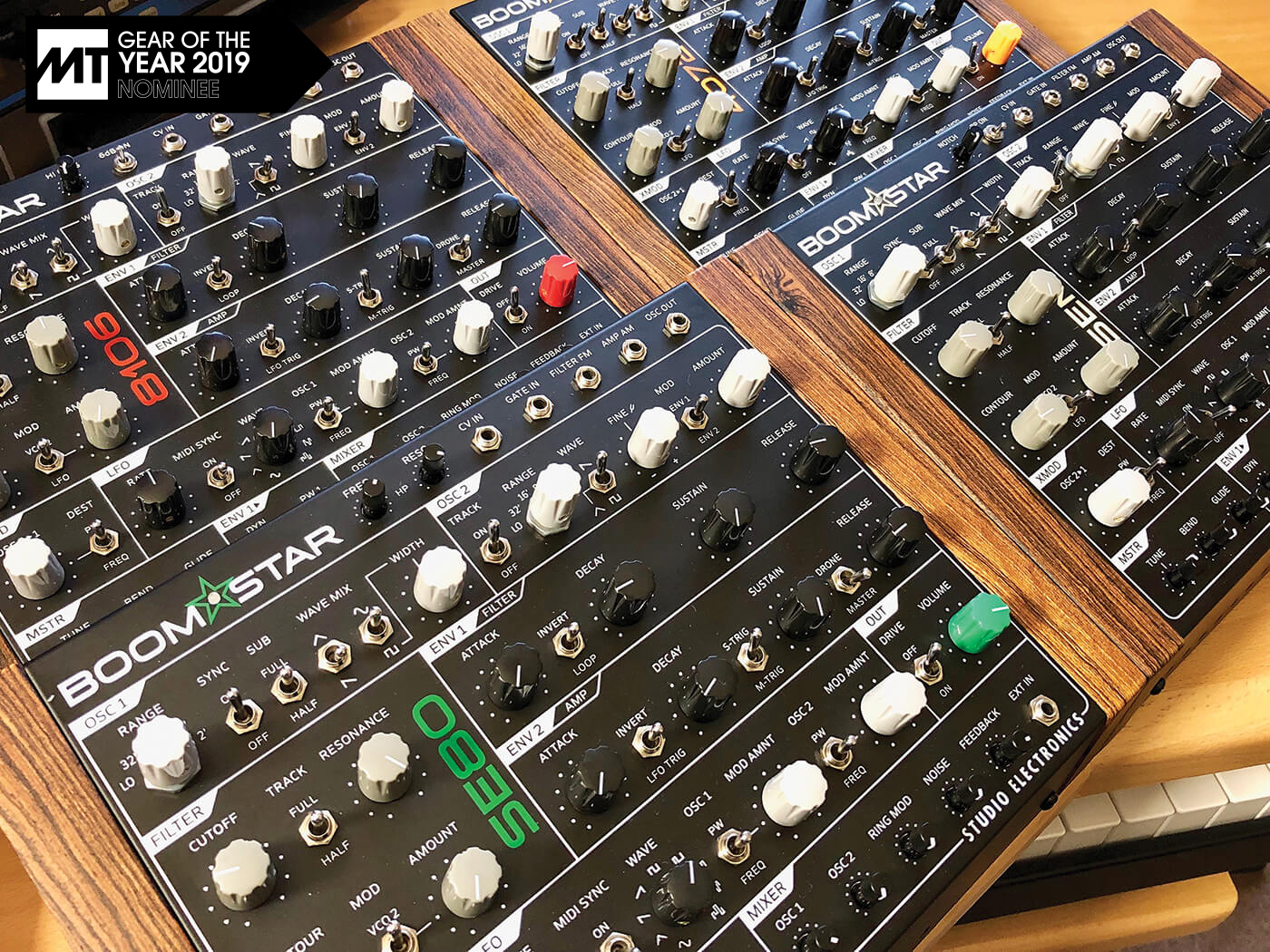
Not exactly one synth but a range, the Boomstar MKII range comprises five monophonic synths each with a different classic filter from the likes of ARP, Roland, Moog, Oberheim and Yamaha.
We were taken by the oscillators themselves, saying “the sheer breadth of how these can be exploited is truly beguiling”. These superbly built synth modules aren’t the most affordable on this list but they do pack an enormous sonic punch and offer a great variety of choice.
Dreadbox Nyx 2

Greek synth-maker Dreadbox has made another device that’s beautifully out of the ordinary with the Nyx 2. Sitting somewhere between the original Nyx and the larger Erebus 3, the Nyx 2 is an analogue, two-oscillator mono/paraphonic synth festooned with Eurorack patch points which are there to invite sound adventuring.
While it might look straightforward to operate, Nyx 2 is made to turn freaky with the flick of a switch or the smallest twist of a knob. The updated version keeps the excellent digital reverb of its predecessor, loved by drone fans, and has a dual filter, and impressive modulation capabilities. For sheer weirdness, this is a great pick.
Modal Electronics CRAFTsynth v2.0
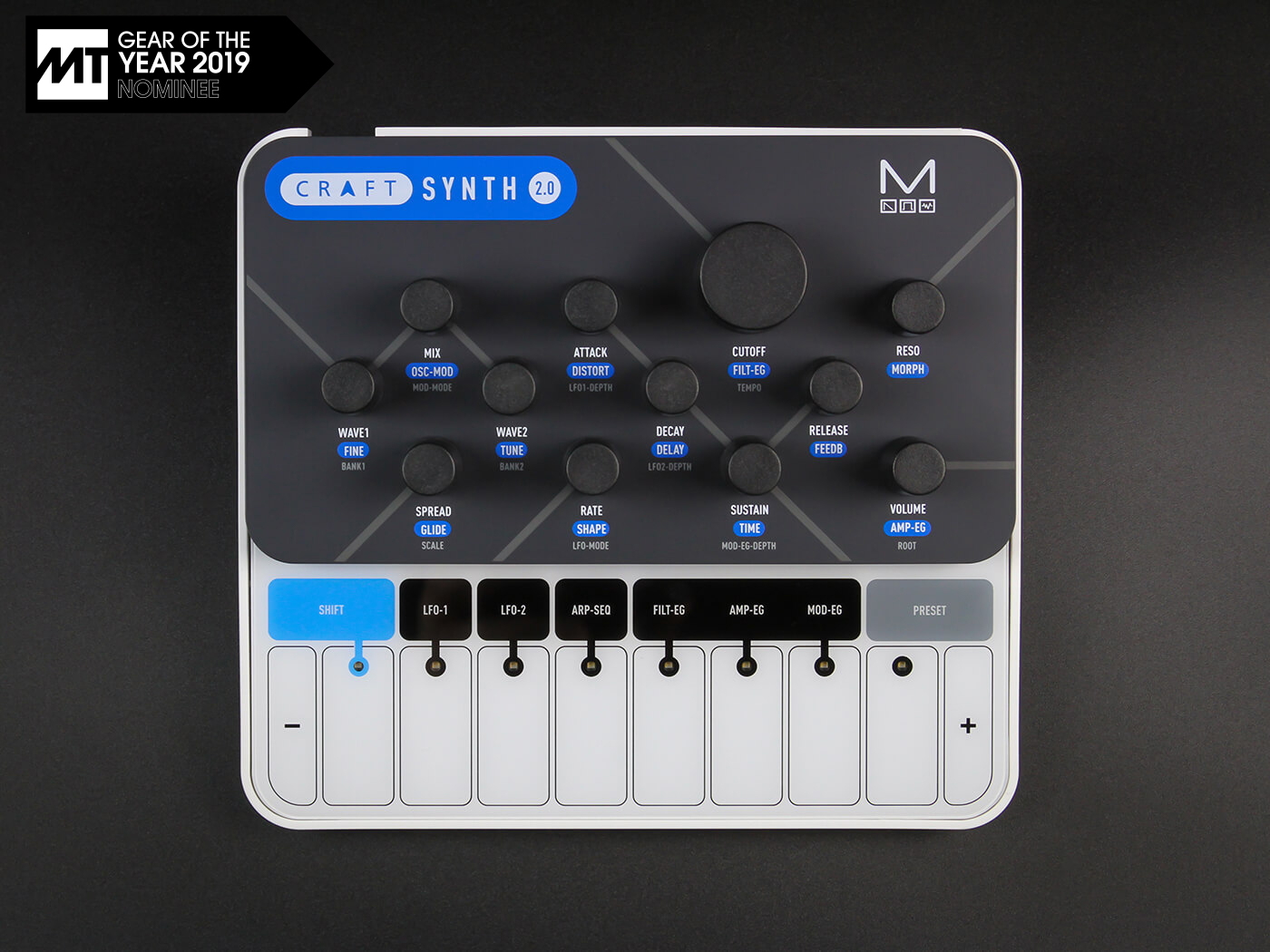
If you’ve ever wanted a wavetable synth that’ll fit neatly into your laptop bag, you’re firmly in luck with CRAFTsynth v2.0. With its eight oscillators and virtual analogue (with wave morphing), digital and generative waves onboard, the CRAFTsynth 2.0 a sonic powerhouse on a minuscule budget. Like the other Modal synth on this list, you can delve deeper with the accompanying app, and can even control it from your DAW with neatly integrated VST/AU plug-in.
This vibey little synth delivers a unique sound on a small budget and could be used in live scenarios or in the studio.
Behringer Odyssey
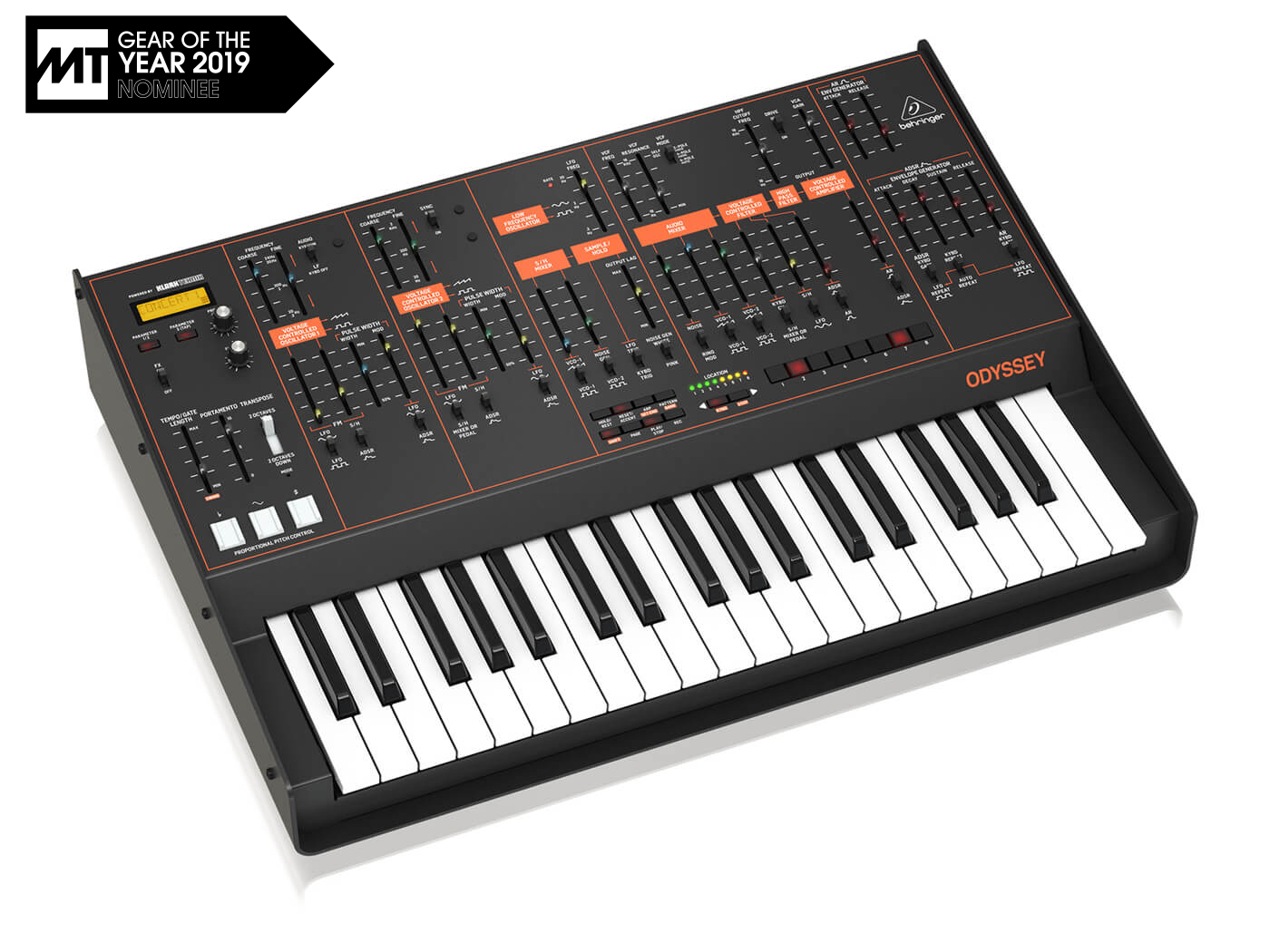
The first of our Behringer picks on the list, is the company’s excellent recreation of the ARP Odyssey. Keeping the full-sized keys of the original, Behringer has made an instrument that’s a joy to play, capable of the same bass, lead and sci-fi sounds of its forbears. As far as vital stats go, the Behringer Odyssey is duophonic synth with three different, switchable filters – to correlate with different filters used in the original three revisions of the ARP-produced synth.
Where Behringer’s recreation deviates from the original is with the inclusion of onboard effects from Klark Teknik. Reverbs, delays, phasers and other modulation effects are present, and welcome additions for performance. Plus, there’s a 32-note sequencer and arpeggiator.
Controversy aside, our reviewer found “brilliance in sonic colour and oodles of creative potential, just like the original”. And, for the price, it’s very compelling.
Behringer MS-101/MS-1
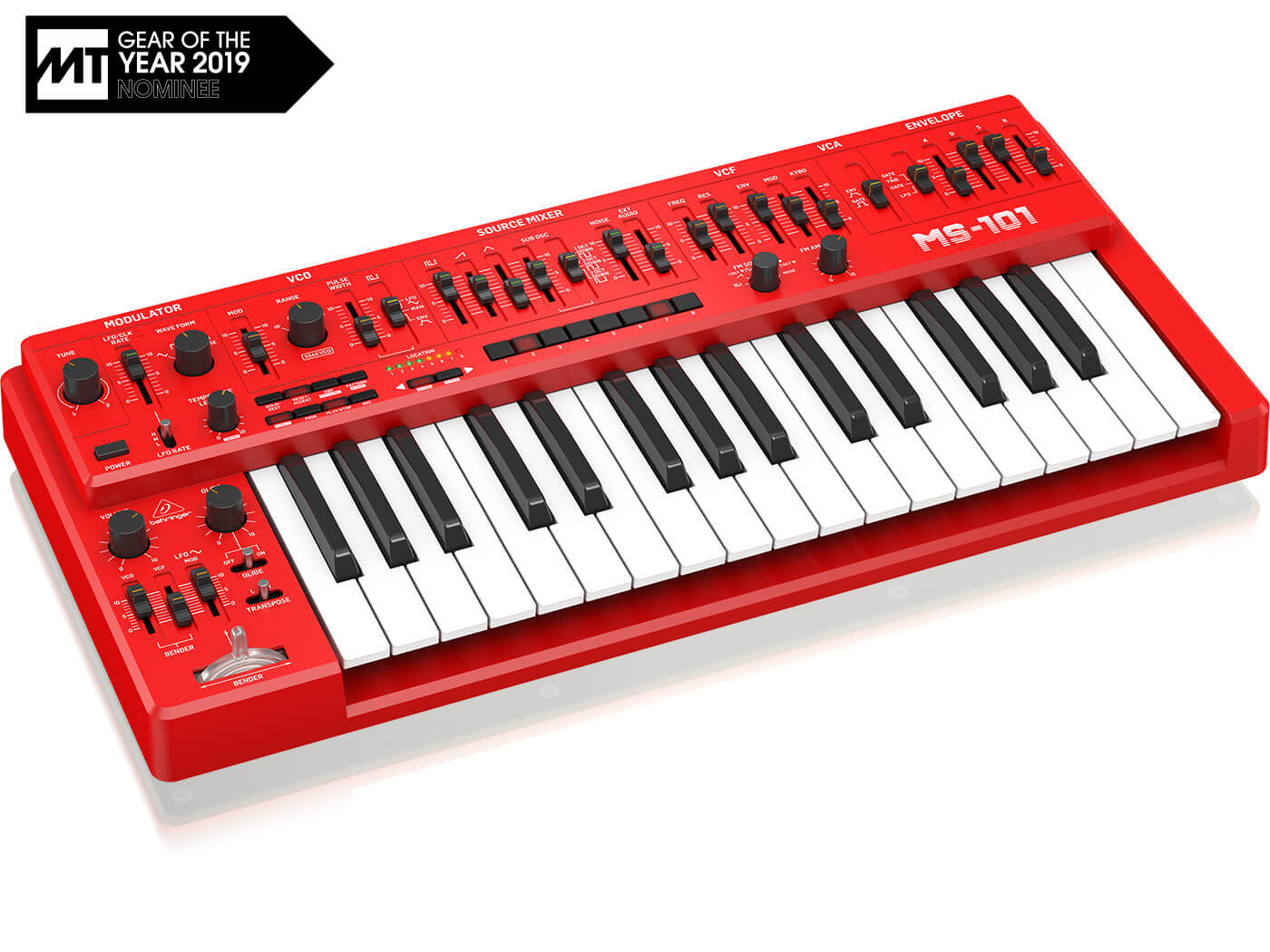
The original Roland SH-101 is loved for its monophonic grunt and simplicity of operation, and Behringer’s MS-101 (now sold as the MS-1) is a fine homage. As well as playing exactly like a vintage SH-101, making it a lot of fun, it also gets some updates such as a triangle wave shape that you can blend in, along with an external input.
The inclusion of FM sets this distinctly apart from the original, and that’s no bad thing – it yields some “incredibly exciting” sounds, according to our reviewer. Just like the Odyssey, the MS-1 adds a 32-step sequencer and arpeggiator.
Behringer has put its own stamp on a classic design here, and made a synth that’s incredibly fun to play in the process, but will it garner the most votes?
Novation Summit
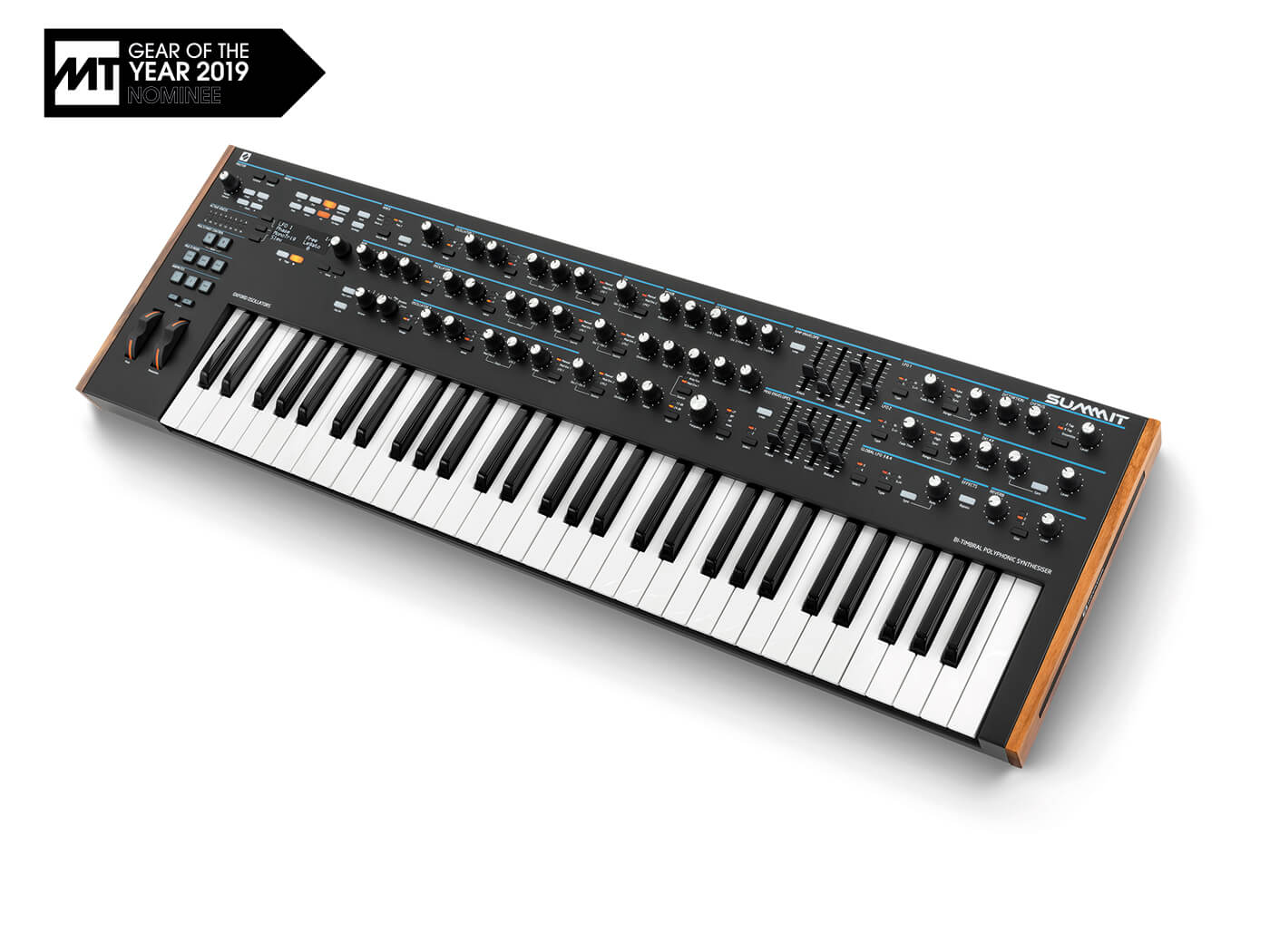
The follow-up to the Peak, Novation’s Summit is a 16-voice, bi-timbral hybrid polysynth with high-resolution digital oscillators and analogue dual filter, overdrive, distortion and digital effects. The bi-timbral nature of the synth means you can either huge 16-voice patches, or have two 8-voice synths that can either be split across the keyboard or layered.
The Summit is more than just two Peaks, adding an arpeggiator and the whole synth sounds phenomenal. From huge, atmospheric pads to dance leads and basses, and through the world of FM, there’s a lot to discover. It’s hardly surprising we called it “the company’s best-ever synth release and a landmark in Novation product releases.”
Check out all the Gear Of The Year 2019 categories here.